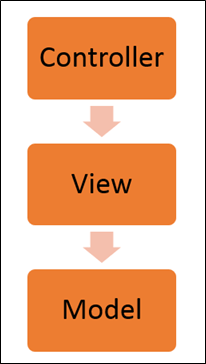AngularJS
How to Create CUSTOM Directive in AngularJS with Example
What is Custom Directive? A custom directive in Angular Js is a user-defined directive with your...
AngularJS is an open source Model-View-Controller framework which is similar to the JavaScript framework.
Angular JS is probably one of the most popular modern day web frameworks available today. This framework is used for developing mostly Single Page applications. This framework has been developed by a group of developers from Google itself.
Because of the sheer support of Google and ideas from a wide community forum, the framework is always kept up to date. Also, it always incorporates the latest development trends in the market.
In this tutorial, you will learn-
Angular has the following key features which makes it one of the powerful frameworks in the market.
MVC – The framework is built on the famous concept of MVC (Model-View-Controller). This is a design pattern used in all modern day web applications. This pattern is based on splitting the business logic layer, the data layer, and presentation layer into separate sections. The division into different sections is done so that each one could be managed more easily.
Data Model Binding – You don't need to write special code to bind data to the HTML controls. This can be done by Angular by just adding a few snippets of code.
Writing less code – When carrying out DOM manipulation a lot of JavaScript was required to be written to design any application. But with Angular, you will be amazed with the lesser amount of code you need to write for DOM manipulation.
Unit Testing ready – The designers at Google not only developed Angular but also developed a testing framework called "Karma" which helps in designing unit tests for AngularJS applications.
Angular.js follows the MVC architecture, the diagram of the MVC framework as shown below.

The Controller represents the layer that has the business logic. User events trigger the functions which are stored inside your controller. The user events are part of the controller.
Views are used to represent the presentation layer which is provided to the end users
Models are used to represent your data. The data in your model can be as simple as just having primitive declarations. For example, if you are maintaining a student application, your data model could just have a student id and a name. Or it can also be complex by having a structured data model. If you are maintaining a car ownership application, you can have structures to define the vehicle itself in terms of its engine capacity, seating capacity, etc.
Since it's an open source framework, you can expect the number of errors or issues to be minimal.
Two-way binding – Angular.js keeps the data and presentation layer in sync. Now you don't need to write additional JavaScript code to keep the data in your HTML code and your data later in sync. Angular.js will automatically do this for you. You just need to specify which control is bound to which part of your model.
Routing – Angular can take care of routing which means moving from one view to another. This is the key fundamental of single page applications; wherein you can move to different functionalities in your web application based on user interaction but still stay on the same page.
Angular supports testing, both Unit Testing, and Integration Testing.
It extends HTML by providing its own elements called directives. At a high level, directives are markers on a DOM element (such as an attribute, element name, and comment or CSS class) that tell AngularJS's HTML compiler to attach a specified behavior to that DOM element. These directives help in extending the functionality of existing HTML elements to give more power to your web application.
What is Custom Directive? A custom directive in Angular Js is a user-defined directive with your...
What is $scope in AngularJS? $scope in AngularJS is a built-in object which basically binds the...
The best way to see the power of an AngularJS Application is to create your first basic program...
What is ng-model in AngularJs? ng-model is a directive in Angular.JS that represents models and its...
AJAX is the short form of Asynchronous JavaScript and XML. AJAX was primarily designed for...
Training Summary AngularJS is a Javascript framework used for building MVC based applications. This course...